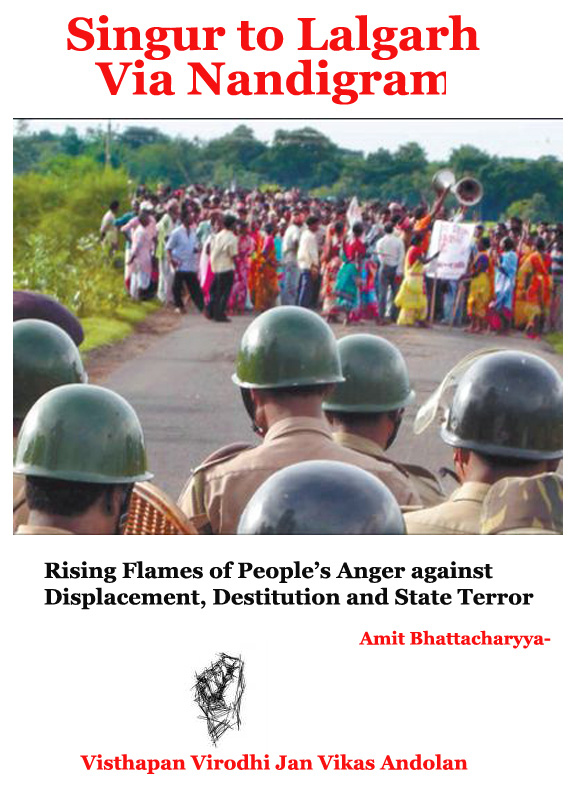CPI-Maoist to step up war to capture power
Posted by Admin on July 27, 2009

Bow and arrow wielding member of the Maoists' village militia, known as Sangam, that tries to protect the Maoist movement in the Bastar region of Chhattisgarh state, India.
Related Post: “Post-Election Situation — Our Tasks”, a circular from the Politbureau of the CPI(Maoist) dated June 12, 2009. ( PDF format 260 KB) ; MS Word format (119 KB)
Raipur, July 27: Indian Maoists, described by Prime Minister Manmohan Singh as the country’s greatest security challenge, have come up with an audacious plan to seize political power by stepping up “armed resistance” and inflicting “severe losses to the enemy forces” all over the country.
At the same time, the outlawed Communist Party of India-Maoist (CPI-Maoist) is telling its guerrillas to learn a lesson from the decimation of the Tamil Tigers in Sri Lanka and not to be overconfident.
The CPI-Maoist programme is part of a 20-page secret policy document that was decided by the party’s leadership at an undisclosed forested area last month. Dated June 12, IANS has a copy of the document.
The CPI-Maoist has warned that its new war against the Indian state will be “more long drawn and more bitter” than the struggle India waged against British colonial rule for “seizure of political power”.
The document, ‘Post-Election Situation, Our Tasks’, is in English. It outlines how and where the Maoists need to step up attacks with a changed strategy, keeping in mind the setbacks suffered by the Liberation Tigers of Tamil Eelam (LTTE).
Under the sub-heading ‘Immediate Tasks’, it says the entire party and its armed wings need to carry out “tactical counter-offensives and various forms of armed resistance and inflict severe losses to the enemy forces”.
“Attacks should be organised with meticulous planning against the state’s khaki and olive-clad terrorist forces, SPOs (Special Police Officers), police informants, and other counter-revolutionaries and enemies of the people.
“These attacks should be carried out in close coordination with, and in support of, the armed resistance of the masses; these should be linked to the seizure of political power and establishment of base areas; it is the combined attacks by all the three wings … and the people at large that can ensure the defeat of the enemy offensive.
“In order to defeat the new offensive by the enemy and to protect the gains of People’s War, it is very essential to rouse the masses throughout the country (to) stand up in support of the struggles in Dandakaranya, Bihar, Jharkhand, Orissa, Andhra Pradesh, West Bengal, Maharashtra, Karnataka and other places”.
Dandakaranya mostly covers Chhattisgarh’s mineral rich Bastar region as well as India’s most thickly forested Abujhmar hills where police believe the CPI-Maoist has a military headquarters and hideouts for its leaders.
The document makes several references to the LTTE, which the Sri Lankan military crushed in May, ending one of the world’s longest running insurgencies.
It says that “the setback suffered by the LTTE has a negative effect on the revolutionary movement in India as well as South Asia and the world at large”.
“The experience of LTTE’s setback in Sri Lanka is very important to study and take lessons. The mistake of the LTTE lay in its lack of study of the changes in enemy tactics and capabilities and an underestimation of the enemy along with an overestimation of its own forces and capabilities.”
The CPI-Maoist asks its guerrillas to “create more difficulties to the enemy forces by expanding our guerilla war to new areas and intensifying the mass resistance in the existing areas so as to disperse the enemy forces over a sufficiently wider area”.
At the same time, the party has said there was a need to “protect the leadership and preserve party cadres and fighters by avoiding unnecessary losses”.
It wants “weaknesses in the existing mechanism” rectified “by avoiding everything likely to be exposed to the enemy through betrayers, arrested persons and party records”.
The CPI-Maoist has gone on the offensive in recent months, slaughtering police and paramilitary forces in Chhattisgarh and other states.
The Maoist movement in India began in 1967 in West Bengal’s Naxalbari village because of which the rebels came to be known as Naxalites. Though hundreds of Maoists have been killed since then, they continue to operate in several states.

























Leave a comment